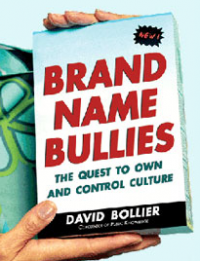The New York Times has a front-page story today about a New York chef suing a competitor whom she claims ripped off her recipes and the look-and-feel of her restaurant. Rebecca Charles, the owner and chef of the Pearl Street Oyster Bar claims that Ed’s Lobster Bar copied “each and every element” of her restaurant, from the white marble bar, the gray wainscoting and even the Caesar salad. This is one of those dog-bites-man stories that is irresistible to the Times -- a sophisticated chuckle for its highbrow readers -- but it does little to illuminate the wisdom of “intellectual property law” in this case or the specific legal arguments being made.
Instead, reporter Pete Wells skates the surface with a credulous, anecdotal assessment of the issues. He cites a chef who has applied for a patent on some culinary inventions, and another chef who trademarked the terms “swordfish chop” and “salmon pastrami,” but found he could not successfully defend them. And he quotes a Columbia Law School professor, Tim Wu, who finds it logical that lawyers would want restaurant help to sign “nondisclosure agreements.” None of these comments are really germane to the question of what constitutes a restaurant “knockoff” and whether the Pearl Oyster Bar should be legally able to shut down Ed’s Lobster Bar.
Is Ms. Charles claiming that food preparation and restaurant concepts are protectible under copyright and trademark law, respectively? From reading the article, it’s not clear. If these are her claims and she is successful in her lawsuit, then American restaurants are likely to collapse under the weight of expensive litigation and hair-splitting legalisms. The Times article would have been a great opportunity to explain why certain elements of our culture should not be propertized.
So here’s my version: The restaurant business has remained so competitive, innovative and robust because much of its core work has been largely beyond the scope of copyright and trademark law. At least the Times makes clear that Ms. Charles’ restaurant was not a wholly original creation. It was inspired by “another narrow, unassuming place, Swan Oyster Depot, in San Francisco,” and by “the seascape along the Maine coast where she spent summers as a girl.” Ms. Charles also admits that she learned the Caesar’s salad recipe from her mother, who herself learned it from a chef at a now-defunct Los Angeles restaurant.
Isn’t this really the point -- that a great deal of creativity is a collective, intergenerational and cultural affair that belongs to the commons? If one person could own the “look and feel” of a restaurant, perhaps the Swan Oyster Depot should consider a lawsuit against the Pearl Oyster Bar. And what if the forgotten L.A. chef were to materialize to claim “his” salad recipe? Should he be entitled to royalties or damages? This could get tedious, expensive and unfair very quickly.
Imagine if the mere concept of the oyster bar or its component parts (e.g., a white marble bar, recipes) were “ownable.” Lawyers would be needed to vet any innovation at a restaurant. Restaurants and chefs would be too fearful to try something new lest it infringe upon someone else’s “property” (and where would the law draw the line between what?s yours and what’s mine? Hire some lawyers!) For its part, the public would not gain the fruits of creative innovation, lower prices and new trends -- or subsequent waves of emulation and novelty. Everything would be locked up. (And you want to know why the music industry is so moribund?)
My advice to Ms. Charles: be careful what you wish for. Take pride in that your Pearl Street Oyster Bar and don’t ruin the restaurant business by over-propertizing and over-lawyering it.












Recent comments